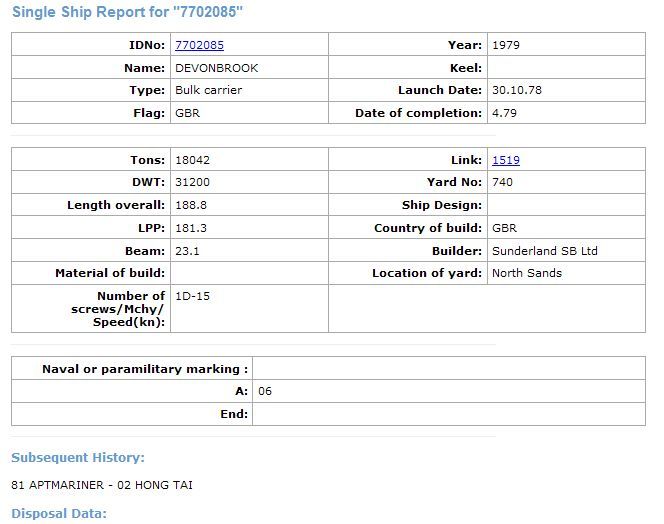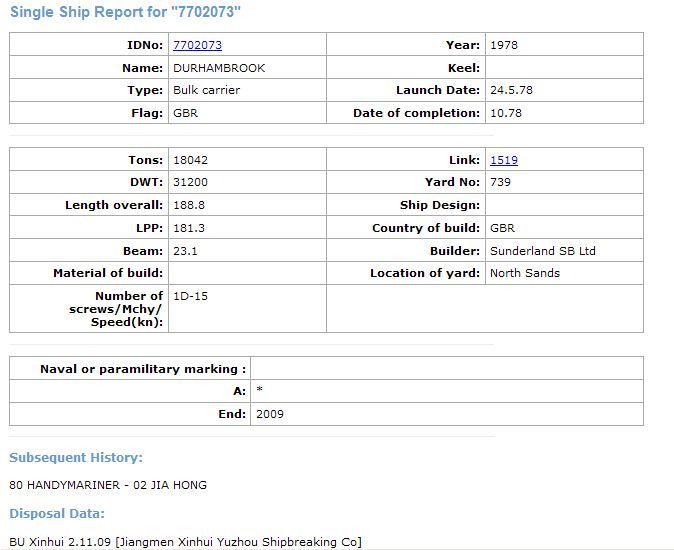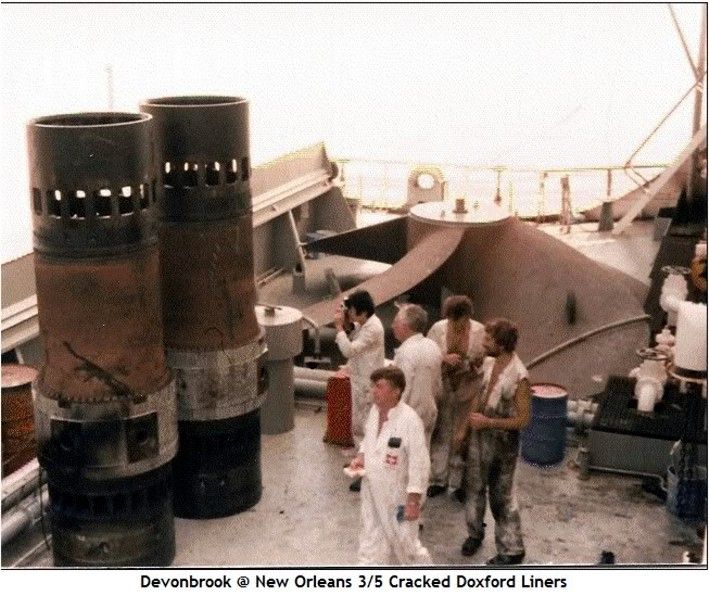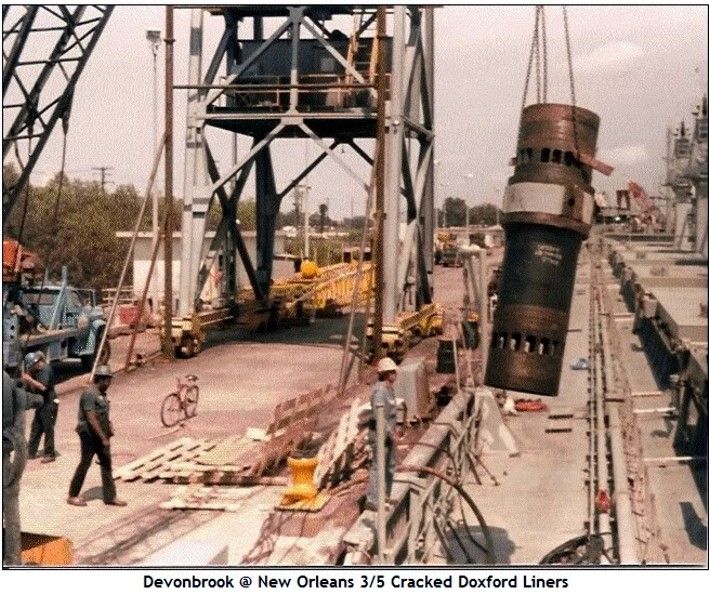DEVONBROOK
5 posts
• Page 1 of 1
Re: DEVONBROOK
Thompson yard number 739, Doxford 760J4C engine, number 458. for Comben and Longstaff ( Consolidated Gold Fields). Other names: Handy Mariner; Jai Hong; Ocean Bright; Tong Soon; De Liang. Sister to yard number 740 Durhambrook, engine number 459. Apt Mariner; Hong Tai.
- fitter
- Posts: 398
- Joined: Fri Mar 01, 2013 8:48 pm
Re: DEVONBROOK
Hi Fitter,
According the MIRAMAR SHIPPING INDEX, the particulars are like this:
DEVONBROOK

DURHAMBROOK

Regards
Alfons
According the MIRAMAR SHIPPING INDEX, the particulars are like this:
DEVONBROOK

DURHAMBROOK

Regards
Alfons
- averheijden
- Posts: 25
- Joined: Sat Apr 06, 2013 12:39 pm
- Location: Stekene (Belgium)
Re: DEVONBROOK
Problems on the DEVONBROOK

What I not understand is 3 of 5 cylinders cracked, while it was a 4 cylinder ?
Regards
Alfons

What I not understand is 3 of 5 cylinders cracked, while it was a 4 cylinder ?
Regards
Alfons
- averheijden
- Posts: 25
- Joined: Sat Apr 06, 2013 12:39 pm
- Location: Stekene (Belgium)
Re: DEVONBROOK
Ms DEVONBROOK

The vessels Durham and Devon Brook Brook, both equipped with Doxford 76J4C engines.
These engines were designed as engines operating in accordance with the constant-pressure system, with respect to the previous engines working in accordance with the impulse system.
One of the main differences in the operation of these engines is the acceleration of the turbine during maneuvering and at "Full Ahead" when leaving the port.
At constant pressure by the size of the exhaust receiver, a longer time is needed in order to fill it with sufficient gas pressure to the turbine at a sufficient speed to obtain, as opposed to a turbine operating in accordance with the impulse system.
The constant pressure system is designed with an outlet receiver that at least two and a half cylinder volumes of air / exhaust required before an acceleration of the turbine may cause.
So, "sometimes" there was a great tendency of engineers, who sailed with engines working under the constant pressure system to speed of the engine rapidly and not enough time to the Turbocharger to spin it up.
This means that the engine has incomplete combustion and exhaust temperature to rise rapidly.
This happens as mentioned earlier, both times during the maneuvering of the ship and especially when "Full Power" is sought and given.
Some engineers who simply direct the fuel trade in that position places that normally the "Full Ahead position", after the signal "Full Power" by the bridge was given and immediately walked away.?
They let the engine further just struggles to the Full Force speed.
The engine was completely neglected at that point but a glance at the exhaust temperatures.
Rapid changes in temperature gives very high thermal stress in the material and finally cracks in cylinder liners.
In this way the engine to abuse, will in the course of time, a very harmful effect on the cylinder liners, which was possible the cause here?.
That is my point of view, which does not have to be the true!
Regards
Alfons

The vessels Durham and Devon Brook Brook, both equipped with Doxford 76J4C engines.
These engines were designed as engines operating in accordance with the constant-pressure system, with respect to the previous engines working in accordance with the impulse system.
One of the main differences in the operation of these engines is the acceleration of the turbine during maneuvering and at "Full Ahead" when leaving the port.
At constant pressure by the size of the exhaust receiver, a longer time is needed in order to fill it with sufficient gas pressure to the turbine at a sufficient speed to obtain, as opposed to a turbine operating in accordance with the impulse system.
The constant pressure system is designed with an outlet receiver that at least two and a half cylinder volumes of air / exhaust required before an acceleration of the turbine may cause.
So, "sometimes" there was a great tendency of engineers, who sailed with engines working under the constant pressure system to speed of the engine rapidly and not enough time to the Turbocharger to spin it up.
This means that the engine has incomplete combustion and exhaust temperature to rise rapidly.
This happens as mentioned earlier, both times during the maneuvering of the ship and especially when "Full Power" is sought and given.
Some engineers who simply direct the fuel trade in that position places that normally the "Full Ahead position", after the signal "Full Power" by the bridge was given and immediately walked away.?
They let the engine further just struggles to the Full Force speed.
The engine was completely neglected at that point but a glance at the exhaust temperatures.
Rapid changes in temperature gives very high thermal stress in the material and finally cracks in cylinder liners.
In this way the engine to abuse, will in the course of time, a very harmful effect on the cylinder liners, which was possible the cause here?.
That is my point of view, which does not have to be the true!
Regards
Alfons
- averheijden
- Posts: 25
- Joined: Sat Apr 06, 2013 12:39 pm
- Location: Stekene (Belgium)
5 posts
• Page 1 of 1
Return to Thompson JL / North Sands
Who is online
Users browsing this forum: No registered users and 10 guests